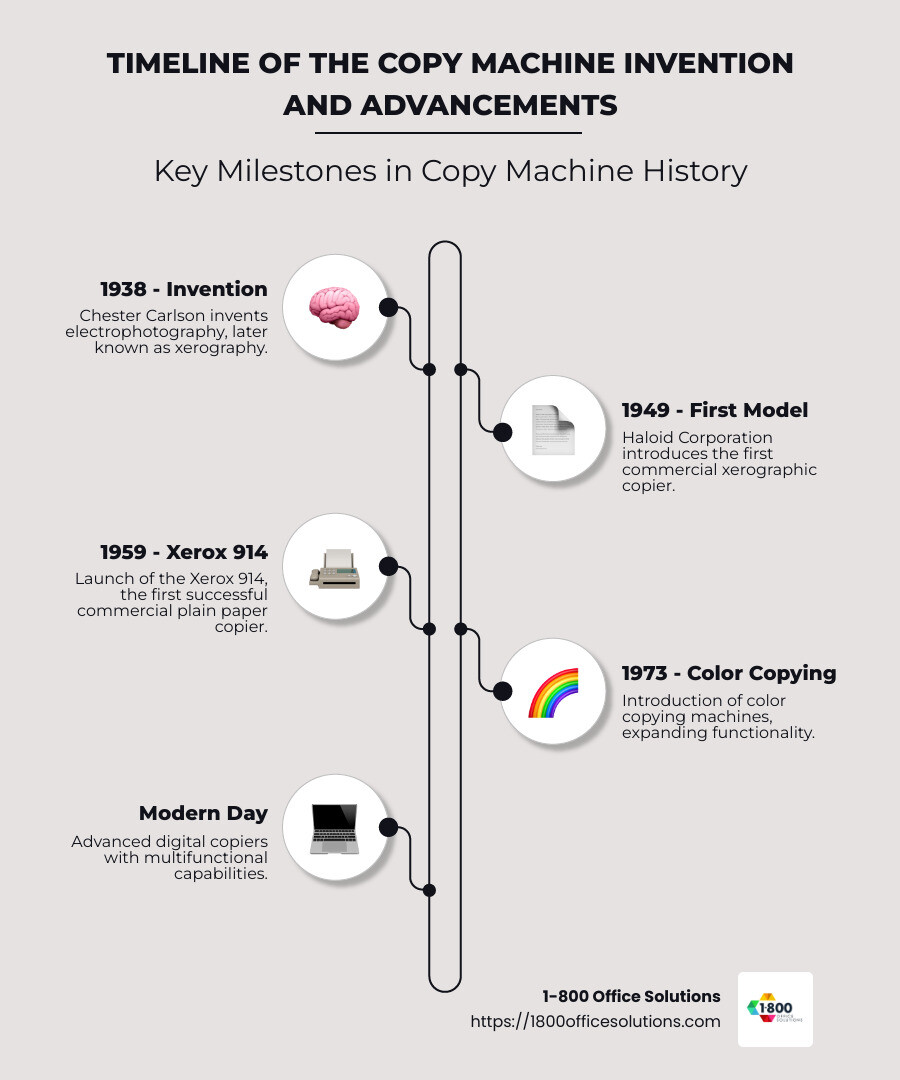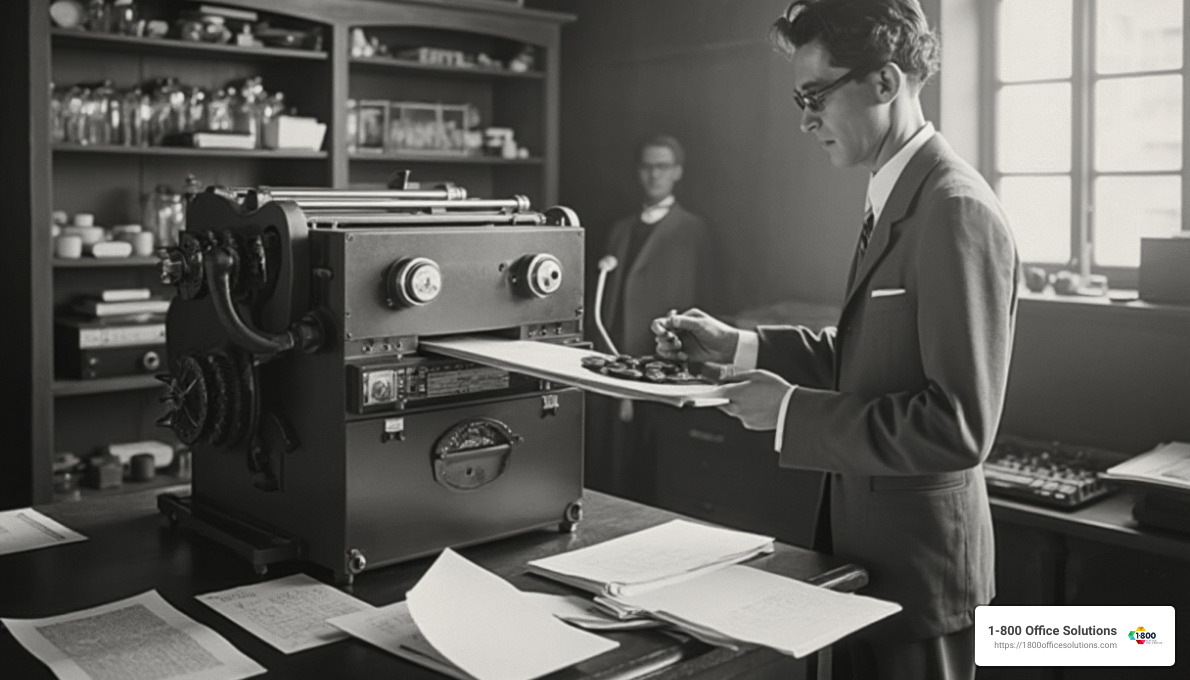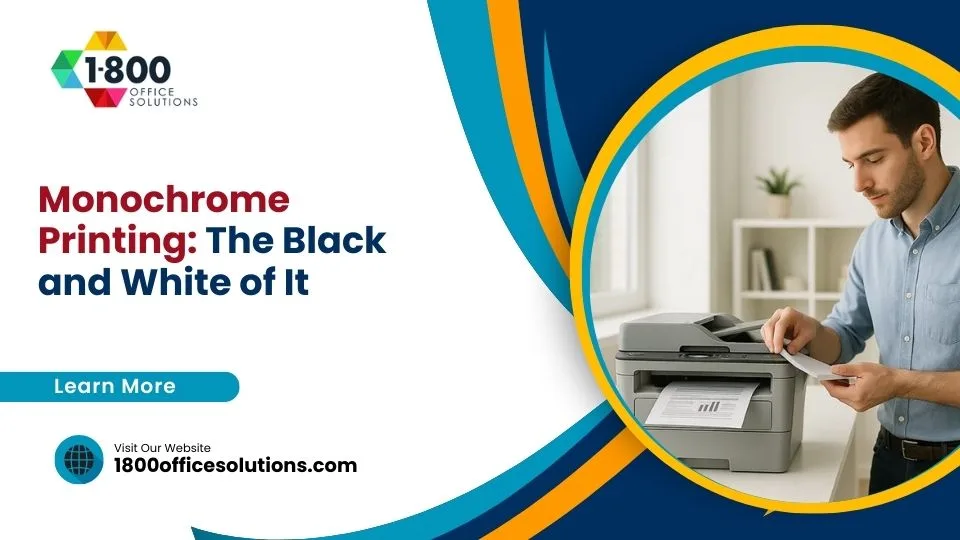The Invention of the Copy Machine: Date and Insights Revealed
When was the invention of copy machine? The groundbreaking technology that revolutionized document reproduction first took shape when Chester Carlson invented electrophotography in 1938. This process, later known as xerography, laid the foundation for the modern copy machine.
Electrophotography marked a dramatic shift from manual duplication methods, such as carbon copying, to a more efficient, automated process. Key facts to know:
- Inventor:Chester Carlson
- Year: 1938
- Process: Electrophotography (later xerography)
The invention of the copy machine was a game-changer for offices worldwide. Chester Carlson’s ingenious approach addressed the growing demand for an efficient document copying solution. The adoption of electrophotography drastically cut down the time and effort required for making multiple copies.
Stay tuned, as we dig deeper into how this technology changed the modern office landscape.

Key terms for when was the copy machine invented:
The journey of the copy machine began in 1938 with Chester Carlson’s invention of electrophotography. This innovative process, later renamed xerography, revolutionized how documents were reproduced.
Chester Carlson, a physicist and inventor, was driven by the tediousness of manual copying methods used in offices, such as carbon paper. He envisioned a simpler, more efficient way to duplicate documents. His breakthrough came on October 22, 1938, when he successfully created the first photocopy. The words “10.-22.-38 ASTORIA” marked this historic moment, forever changing office work.

Carlson’s method involved using static electricity to transfer an image onto paper, a technique that was faster and required fewer resources than previous methods. This invention laid the groundwork for the first commercial copier, the Xerox 914, which would debut years later.
The introduction of xerography was a pivotal moment. It transitioned offices from slow, manual duplication processes to fast, automated copying, saving time and increasing productivity.
Key Highlights:
- Year of Invention: 1938
- Inventor: Chester Carlson
- Technology: Electrophotography, later known as xerography
Carlson’s invention did not gain immediate commercial success, but it set the stage for future developments. As we explore further, we’ll see how this technology evolved and led to the widespread adoption of copy machines in offices around the world.
The Evolution of Copy Machines
The evolution of copy machines took a significant leap forward with the introduction of the Xerox 914, the first commercial photocopier. This game-changing device was launched in 1959 by the Haloid Corporation, a company that later became known as Xerox Corporation.
The Xerox 914: A Revolutionary Device
The Xerox 914 was a massive machine, weighing around 650 pounds, roughly the size of two washing machines. Despite its size, it was because it could make copies on plain paper without damaging the original document. This was a significant improvement over previous methods that required special paper or skilled operators.
The machine worked by placing an original document on a glass pane and pressing a button to create a single copy. It could produce up to seven copies per minute, which was a remarkable feat at the time. A famous commercial from that era featured a woman confidently saying:
“I make perfect copies of whatever my boss needs by just turning a knob and pushing a button.”
However, the Xerox 914 was not without its quirks. One of the first models caught fire, but the innovation it represented overshadowed these early setbacks. Its ability to produce multiple copies quickly and affordably made it an instant success.
Transition to Xerox Corporation
The success of the Xerox 914 propelled the Haloid Corporation to change its name to Xerox Corporation in 1961. This marked a new era for the company, solidifying its position as a leader in office technology.
The Xerox 914’s success was not just due to its functionality but also its affordability. Xerox offered the machine on a rental basis, which made it accessible to businesses of all sizes. This strategy effectively outmaneuvered competitors and established Xerox as a household name in the office equipment industry.
Legacy and Ongoing Impact
The core technology of the Xerox 914 has remained largely unchanged and continues to influence modern copiers, printers, and scanners. The principles of xerography that powered Carlson’s invention are still at the heart of these devices today.
The evolution of copy machines, starting with the Xerox 914, transformed office work by making document reproduction faster, easier, and more accessible. This change laid the groundwork for the modern office as we know it, where information can be shared and duplicated with ease.
We’ll explore how these advances have impacted the structure and efficiency of office environments.
The Impact of Copy Machines on Modern Offices
The introduction of the copy machine, particularly the Xerox 914, revolutionized the modern office and changed how we handle information. Before this innovation, offices relied heavily on manual methods such as carbon paper and mimeographs to duplicate documents. These methods were time-consuming and required significant effort.
Office Change
With the advent of copy machines, offices underwent a dramatic change. Tasks that once took hours or even days could now be completed in minutes. The ability to quickly and easily reproduce documents meant that offices could operate more efficiently. This efficiency allowed businesses to scale operations, handle more paperwork, and improve overall productivity.
Copy machines also led to the creation of new office layouts. The machines became central fixtures, often occupying dedicated spaces due to their size. As technology advanced and machines became smaller and more efficient, they integrated seamlessly into various office environments, making them indispensable.
Democratization of Information
Copy machines played a crucial role in the democratization of information. Before their widespread use, information was often centralized and controlled by a few individuals within an organization. The ease of making copies allowed for a more equitable distribution of information, enabling more employees to access critical documents.
This shift not only empowered workers but also fostered collaboration and innovation. Employees could share ideas more freely and work together more effectively, leading to a more dynamic and responsive workplace.
Secretarial Work
The introduction of copy machines also significantly impacted secretarial work. Secretaries, who were once tasked with manually copying documents, could now focus on more strategic tasks. This shift allowed them to take on roles that required critical thinking and problem-solving, elevating their position within the office hierarchy.
Moreover, the ability to produce multiple copies quickly reduced the workload associated with document reproduction, allowing secretaries to manage larger volumes of work and contribute more meaningfully to their organizations.
Overall, the invention of copy machine marked a turning point in the evolution of office work. It not only improved efficiency but also changed the way information was shared and accessed, leading to a more open and collaborative work environment.
Next, we’ll dig into some frequently asked questions about the history and evolution of copy machines.
Frequently Asked Questions about Copy Machines
When were copying machines invented?
The first successful copying machine was invented in 1938 by Chester Carlson. His invention, known as xerography, was groundbreaking. Carlson’s method used static electricity to transfer images and text from one surface to another, laying the foundation for modern photocopying.
How were documents copied in the 1800s?
Before the invention of copy machines, copying documents was a labor-intensive process. In the 1800s, people used oiled paper and copying books to duplicate documents. The copying book method involved pressing a freshly written page onto a dampened sheet in a bound book, transferring the ink and creating a reverse image.
Another method involved cast iron plates, where documents were manually pressed to create duplicates. These techniques were far from efficient and often produced less-than-perfect copies, highlighting the nature of xerography when it arrived.
Were there copy machines in 1970?
By the 1970s, copy machines had become more sophisticated. The introduction of color copying was one of the significant advancements during this time. Machines started to offer additional functionalities such as collating, stapling, and printing on various paper sizes. These innovations made copiers even more essential in offices, streamlining document management and enhancing productivity.
The evolution from simple black-and-white copies to versatile color machines marked a significant milestone in the history of office technology.
Conclusion
The invention of the copy machine revolutionized how we work in offices. The technology behind modern copiers, born from Chester Carlson’s groundbreaking discovery of xerography in 1938, laid the foundation for the modern office environment. This technology has evolved from the bulky Xerox 914 to today’s multifunction devices that integrate seamlessly with digital workflows.
The impact of these advancements is seen in the efficiency and productivity gains in offices worldwide. Copy machines have democratized information, making it easier and faster to share, duplicate, and distribute documents. This change has also reshaped secretarial work, allowing staff to focus on more strategic tasks rather than manual duplication.
At 1-800 Office Solutions, we understand the importance of efficient office technology. We offer a range of solutions that harness these advancements to improve your office’s productivity. Whether you’re looking to upgrade your existing equipment or explore new technologies, we’re here to help you make informed decisions.
Explore our offerings and see how we can help you optimize your office solutions. With our expertise, you can ensure your office remains at the forefront of efficiency and innovation.











